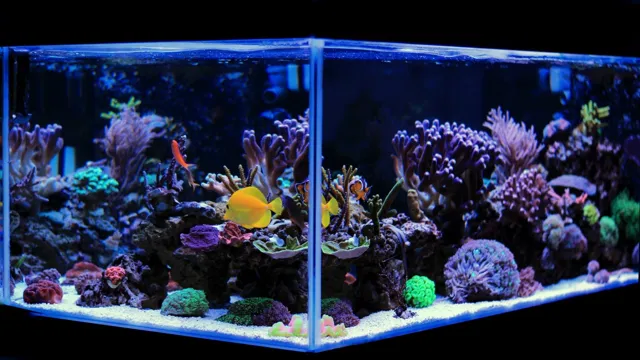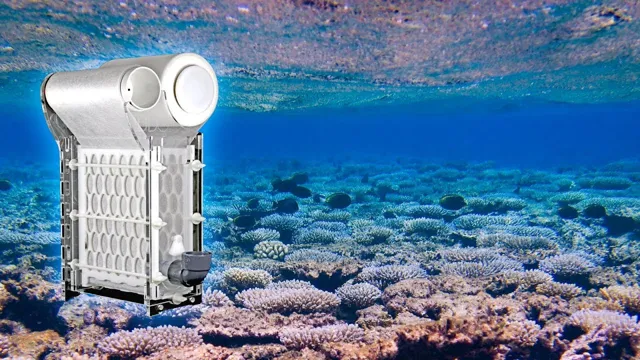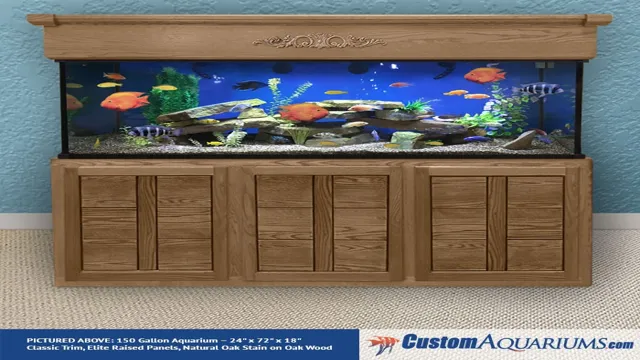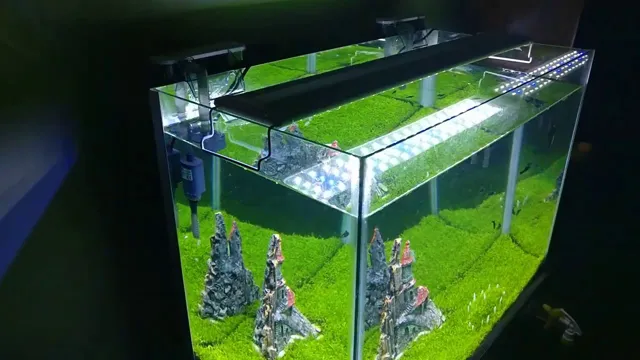Keeping your freshwater aquarium clear and healthy may seem like a daunting task, but it doesn’t have to be. As an aquarium owner, you want nothing more than to have a crystal-clear tank that showcases the beauty of your fish and plants. However, without proper maintenance and care, it can become cloudy and murky.
Don’t worry – with the right knowledge and tools, you can easily achieve a clear and vibrant aquarium. In our comprehensive guide, we will share with you our tips and tricks to ensure your aquarium is always in top condition. From choosing the right filter to maintaining water parameters, we’ve got you covered.
So, let’s dive in and bring back that stunning clarity to your freshwater aquarium!
Understand the causes of cloudiness
To make your freshwater aquarium clear, it’s essential to understand the causes of cloudiness. One of the most common causes is excess waste or uneaten food in the tank. This waste can break down and cause the water to become cloudy and discolored.
Another cause can be inadequate filtration or a lack of maintenance, resulting in a buildup of debris and algae. To combat this, make sure to regularly clean the tank and replace the filter media as needed. Another solution is to introduce live plants into the tank, as they can help absorb excess nutrients and keep the water clear.
Additionally, avoid overfeeding your fish and consider using a water clarifier product to help remove any remaining particles and improve water clarity. By understanding these causes and taking proactive steps to address them, you can enjoy a clear and healthy aquarium for your fish to thrive in.
New Tank Syndrome
Aquarium hobbyists often face a common problem known as New Tank Syndrome, which arises when a new fish tank becomes cloudy. Understanding the causes of cloudiness and addressing them can help prevent this problem. One cause of cloudiness is the presence of free-floating bacteria, which can lead to an outbreak of harmful microorganisms that can harm fish.
Overfeeding, overcrowding, and poor water quality are also common causes of cloudy tank water. Addressing these issues by performing frequent water changes, avoiding overfeeding, and ensuring the proper maintenance of the tank’s filter can prevent New Tank Syndrome. In short, maintaining a clean and balanced aquarium environment is the key to preventing cloudiness and ensuring the health and longevity of your fish.
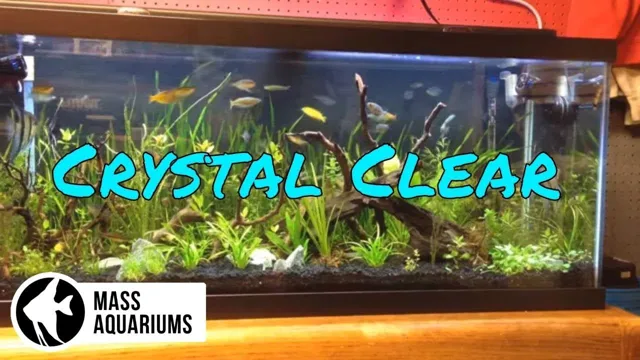
Overfeeding
When you overfeed your fish, it can quickly lead to cloudy water in your tank. But what exactly causes this? Well, when there is excess food in the water, it begins to break down and decompose, leading to an increase in ammonia levels. This increase in ammonia can then lead to an overgrowth of harmful bacteria which can cause cloudiness in the water.
Similarly, if you have too many fish in your tank, they may produce more waste than the filter can handle, leading to cloudy water. To avoid this problem, it is important to only feed your fish the recommended amount and make sure your tank is not overcrowded. Additionally, performing regular water changes and ensuring your filter is functioning properly can also help prevent cloudiness from overfeeding.
So, remember to only feed your fish what they need and maintain a healthy tank environment to avoid the headache of cloudy water.
Improper filtration
If you have ever experienced cloudy aquarium water, then you have likely dealt with improper filtration. Poor filtration can happen for a number of reasons, including an inadequate filtration system, failing to clean or replace the filter media, or not performing regular water changes. When your filter cannot keep up with the waste produced by your fish, uneaten food, and decaying plant matter, it can lead to cloudy water and a buildup of harmful toxins.
Don’t let an improperly functioning filter compromise the health of your aquatic pets. Ensure that your aquarium filtration system is the appropriate size for your tank’s needs, and stay on top of regular cleaning and maintenance. By doing so, not only will you have clear and clean water, but your fish will also thrive in a healthy environment.
Presence of algae
Algae can be one of the primary causes of cloudy water in aquariums. It’s not unusual to see a greenish, slimy buildup on the surface of the water or on the glass walls of the aquarium. This is a clear indication that algae is present.
In most cases, the principal reason behind the algae growth in aquarium water is excess nutrients. These nutrients may originate from overfeeding the fish or not cleaning the water frequently enough. Direct sunlight on the aquarium can also encourage the growth of algae since it provides light energy for photosynthesis. (See Also: How to Clean an Aquarium with Soil Substrate: A Step-by-Step Guide)
To prevent algae growth, consider turning off the aquarium lights periodically, reducing the fish’s feeding quantities, and cleaning the aquarium regularly to remove uneaten food and fish waste. Adding live plants or algae-eating fish can also help keep the algae in check. Maintaining a balance of nutrients and light in the aquarium is the key to keeping it healthy and clear.
Steps to Clear Up Cloudiness
If you’re struggling with a cloudy freshwater aquarium, don’t worry – this is a common issue that can be easily resolved! Your first step should be to check your water parameters using a test kit. High levels of ammonia or nitrite could be the cause of your cloudy water, so make sure to do a partial water change and adjust your filtration accordingly. You may also want to consider adding a bacterial supplement to help establish a healthy biofilter.
Another cause of cloudiness could be a build-up of organic waste, so try reducing your feeding amounts and cleaning any debris from your tank regularly. Finally, adding a polyfilter to your filter can help trap any excess particles and improve water clarity. Remember, consistent maintenance is key to keeping your aquarium clear and healthy for your fish.
With these steps, you’ll have crystal clear water in no time!
Do a water change
Cloudiness in aquarium water can be frustrating. However, one of the first steps you should take to clear it up is to do a water change. Not only will this help remove any debris or uneaten food in the tank, but it will also dilute any harmful substances.
Before doing a water change, make sure to prepare the water ahead of time by using a dechlorinator to detoxify any chlorine or chloramines. Some hobbyists suggest changing 25% of the water every week, while others recommend as much as 50%. Ultimately, it will depend on the stocking levels and maintenance routine of your specific tank.
Doing regular water changes can help prevent cloudiness from occurring in the first place and will also benefit the overall health of your aquatic pets.
Clean the substrate and decorations
When faced with cloudy aquarium water, one of the first steps to take is cleaning the substrate and decorations. Over time, uneaten food, fish waste, and other debris can accumulate and cause water cloudiness. To begin cleaning the substrate, use a siphon or gravel vacuum to remove any debris and uneaten food from the bottom of the tank.
Be sure to vacuum evenly throughout the substrate, not just in one spot. As for decorations, wash them with a soft-bristled brush and warm water to remove any algae or debris that may be causing cloudiness. Avoid using any soap or detergent, as this can harm your fish and any good bacteria present in the tank.
Remember, keeping your aquarium clean is an essential aspect of maintaining healthy and happy fish. With regular tank maintenance, you can reduce the risk of water cloudiness and keep your aquatic environment in tip-top shape.
Check and adjust the filter system
Checking and adjusting the filter system is essential when trying to clear up cloudiness in your pool water. This step ensures that the water is filtered correctly, allowing your pool to maintain proper water chemistry. The first thing you need to do is check your filter gauge pressure.
If it’s too high, this could indicate a dirty or clogged filter. Backwashing might be necessary in this case. If the pressure is too low, this could suggest a problem with the pump, so inspect the pump and skimmer baskets for any debris or clogs.
Additionally, confirm the filter and pump are working correctly and that the pool water is circulating throughout the system correctly. Use pool water test strips to check your pool’s water chemistry often and treat any imbalances that could cause cloudiness and other issues. By regularly monitoring and adjusting your pool’s filter system, you can maintain sparkling and clear pool water.
Introduce live plants
Clear up cloudiness in your aquarium with live plants. Adding live plants to your aquarium is an effective way to get rid of cloudiness caused by excess nutrients in the water. The plants absorb these nutrients and release oxygen, which improves water quality and clarity. (See Also: How to Choose LED Planted Aquarium Light for Optimal Growth and Health)
Before adding live plants, make sure to test the water quality to ensure proper pH levels and lighting conditions for the plants. Choose the right type of plants for your specific aquarium, as some plants require more light and nutrients than others. Regular maintenance, such as pruning and replacing dead or dying plants, is crucial for the success of your aquarium plants.
With the right care, live plants can help keep your aquarium clear and healthy for your aquatic pets.
Prevent Cloudiness in the Future
If you’re tired of dealing with cloudy aquarium water, there are steps you can take to prevent it in the future. First, make sure you’re not overfeeding your fish, as excess food can lead to an excess of waste and nutrients in the water. Next, test the water regularly to ensure proper levels of pH, ammonia, and nitrite.
You may also want to consider adding live plants to help filter the water and add oxygen to the tank. Finally, make sure you’re cleaning your tank regularly, removing debris and performing water changes as needed. By following these steps and taking a proactive approach to aquarium maintenance, you can enjoy crystal-clear water in your freshwater aquarium!
Monitor and maintain proper water parameters
Proper water parameters are essential to prevent cloudiness in your aquarium. It is recommended to monitor the pH, ammonia, nitrite, and nitrate levels regularly to ensure they stay within the appropriate range for your fish and plants. An imbalance in these parameters can cause cloudiness and even harm your aquatic inhabitants.
One way to maintain proper water parameters is by doing partial water changes regularly and using a reliable water conditioner. Ensure the aquarium water is properly cycled by allowing enough time for beneficial bacteria to develop before adding any fish or plants. Following these steps will help prevent cloudiness in the future, keeping your aquarium looking healthy and beautiful.
By being mindful and consistent in monitoring your water parameters, you’ll see improvements in the overall health and well-being of your fish and aquatic plants.
Stick to a regular maintenance schedule
Regular maintenance is key in preventing cloudiness in the future. When it comes to maintaining a clear aquarium, it’s important to follow a regular schedule to ensure the water stays clear and healthy for your fish and other aquatic life. This means regularly changing the water and cleaning the tank, as well as keeping an eye on the filter and ensuring it is working properly.
It’s also important to monitor the levels of chemicals in the water, such as ammonia and nitrite, which can contribute to cloudiness if they are not properly balanced. By sticking to a regular maintenance schedule and staying on top of these important tasks, you can prevent cloudiness and ensure a healthy and vibrant aquarium for your aquatic pets.
Avoid overfeeding your fish
Overfeeding your fish can lead to a lot of problems, one of which is cloudiness in the tank. It’s important to remember that fish only need a small amount of food, and overfeeding can create a buildup of waste in the water. This waste can lead to an increase in bacteria, which then causes the cloudiness.
To prevent this from happening in the future, it’s best to feed your fish just enough to satisfy their needs without overdoing it. You can also invest in a good quality filter that can help to remove any excess food and waste from the tank. By taking preventative measures, you can ensure that your fish stay healthy and that your tank remains clean and clear.
Remember, a little goes a long way when it comes to feeding your fish.
Consider investing in a UV sterilizer
If you want to ensure that your aquarium stays crystal clear, you might want to consider investing in a UV sterilizer. These devices use ultraviolet light to kill off any bacteria or parasites that may be lingering in the water, preventing future cloudiness. While it may seem like an unnecessary expense, a UV sterilizer can actually save you money in the long run by preventing the need for costly chemical treatments and frequent water changes. (See Also: How to Hide Bubble Hose Aquarium in the Most Effective Way Possible?)
Plus, with clearer water, you’ll be able to better enjoy the beauty of your fish and aquarium plants. Consider adding a UV sterilizer to your tank setup to maintain a healthy and visually appealing aquatic environment.
Final Thoughts
After following these steps and implementing some of the tips mentioned, you should see a significant improvement in the clarity of your freshwater aquarium. It’s important to maintain good water quality by regularly testing and monitoring levels of ammonia, nitrates, and nitrites. Adding live plants can also help improve water clarity and provide a natural filtration system.
Remember to clean your filter media and perform partial water changes on a regular basis to keep your aquarium in top shape. With patience and consistent maintenance, you can enjoy a crystal-clear freshwater aquarium that is both aesthetically pleasing and safe for your fish and other aquatic life. So go ahead, take the plunge and create your very own aquatic oasis!
Conclusion
In the end, making your freshwater aquarium clear is a delicate balance of proper filtration, regular water changes, and diligent maintenance. But with a little patience and attention, you can achieve crystal clear water that will showcase the beauty of your aquatic inhabitants. So stay vigilant, stay informed, and remember: when it comes to aquarium care, clarity is key!”
FAQs
What causes cloudiness in freshwater aquariums?
Cloudiness in freshwater aquariums is typically caused by an excess of organic waste, including uneaten food, fish waste, and decaying plant matter.
What steps can be taken to prevent cloudiness in a freshwater aquarium?
Regular water changes, a well-maintained filtration system, and avoiding overfeeding can all help prevent cloudiness in a freshwater aquarium.
How often should you perform water changes in a freshwater aquarium to keep it clear?
The frequency of water changes depends on the size of the aquarium and the number of fish, but a general guideline is to perform a 25-30% water change every two weeks.
Can using too many chemicals or medications in a freshwater aquarium cause cloudiness?
Yes, some chemicals and medications can disrupt the balance of beneficial bacteria in the aquarium, leading to cloudiness. It’s best to use these products only when necessary and in the correct dosages.
Are there any natural methods for clearing up a cloudy freshwater aquarium?
Yes, adding live plants, snails, or shrimp to the aquarium can help naturally clear up cloudiness. Additionally, using activated carbon in the filter can absorb impurities and improve water clarity.
How important is the type and amount of lighting in a freshwater aquarium for maintaining clear water?
Lighting is important for providing the necessary energy for plants and ensuring a healthy ecosystem, but it is not directly related to water clarity. However, too much light can encourage algae growth, which can make the water cloudy.
Is it possible to over-filter a freshwater aquarium, causing cloudiness?
It’s unlikely to over-filter an aquarium, as a well-functioning filtration system can help remove excess waste and maintain water clarity. However, if the filter is not cleaned or maintained properly, it can lead to cloudiness.

